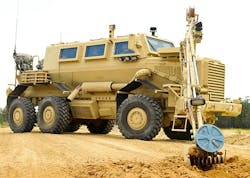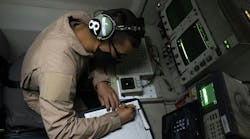Officials of the Fort Belvoir, Va., segment of the Army's Aberdeen Proving Ground issued a solicitation Wednesday (W909MY-15-R-F011) for the Route and Area Clearance for Explosive Hazards project. Proposed technologies must be at least at a laboratory prototype stage.
The Army Contracting Command is issuing the solicitation on behalf of the Army Product Manager for Counter Explosive Hazard (PdM CEH). Researchers are interested in IED-detection approaches that are airborne, vehicle-based forward-looking, vehicle-based downward-looking, and combinations of these modes.
Army experts particularly are interested in technologies that can detect IEDs quickly to support high rates of advance along routes. advance along routes.
The intent is to mount IED-detection capabilities to the Husky Mark III vehicle, the Medium Mine Protected Vehicle (MMPV) Type II, the Buffalo/Mine Protected Clearance Vehicle (MPCV) A2, and the RQ 20 PUMA unmanned aerial vehicle (UAV).
Related: IED hunters adapt to sophisticated threats
Proposed solutions should have the ability to detect surface-laid and shallow-buried, metallic, low-metallic, and non-metallic explosives in a wide range of road surfaces and soil conditions. The probability of detection shall be 95 percent or greater for surface-laid explosive hazards, to include antitank land mines, IED's, unexploded ordnance, and pressure activated trigger mechanisms.
The probability of detection of explosives buried as deep as eight inches should be 90 percent or greater for the same kinds of explosive hazards. Proposed solutions also should be able to mark deep-buried metallic, low-metallic, and non-metallic IEDs. The probability of detection should be 85 percent or greater for IEDs and caches buried as deeply as four feet.
Companies interested should email responses no later than 29 July 2015 to the Army's Brendan DeLuca at [email protected]. For questions or concerns contact DeLuca by email or by phone at 703-704-0816.
More information is online at https://www.fbo.gov/notices/8f1e4286b83a9b2e138851e8cf71d247.



